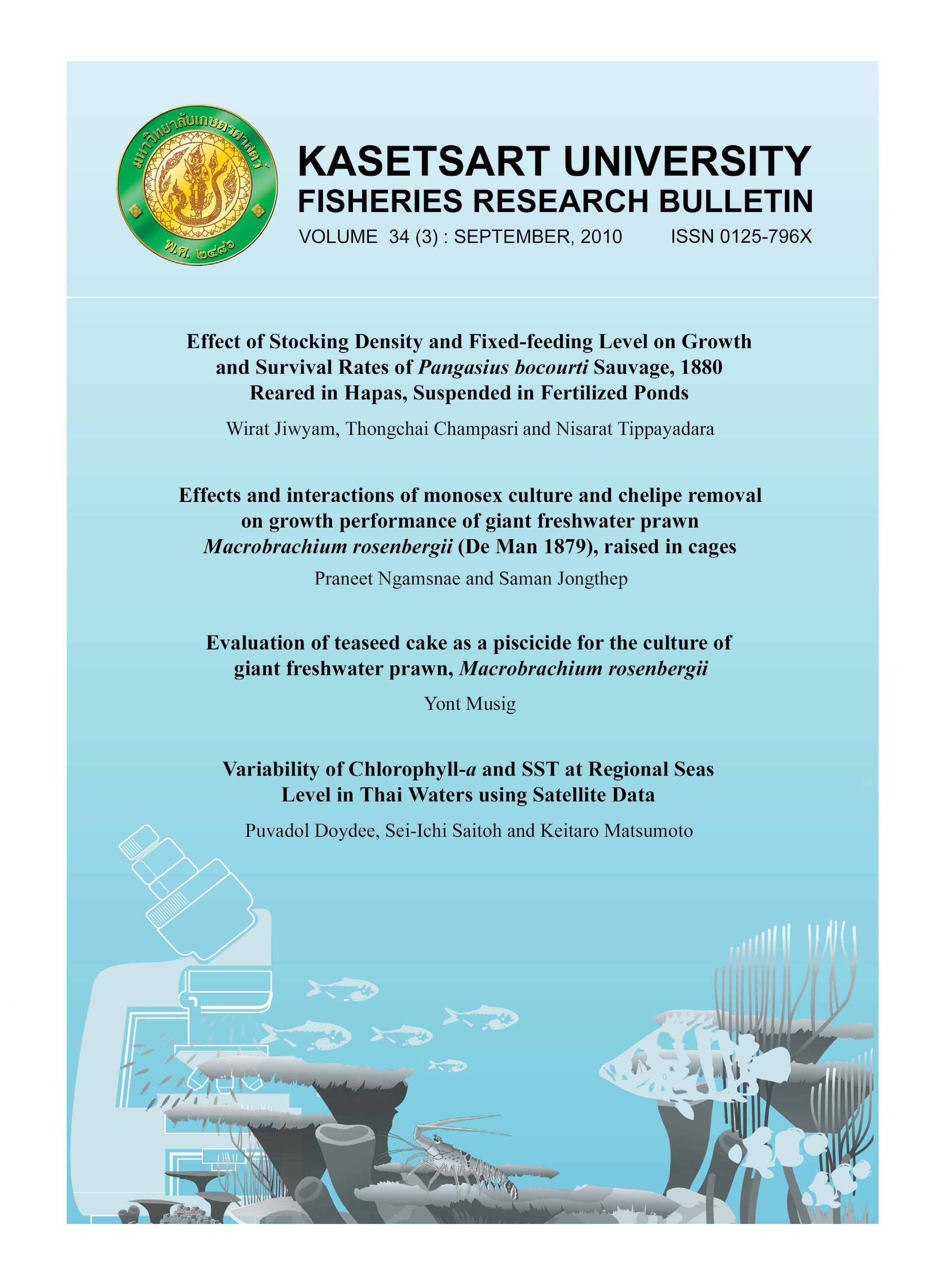Effect of Stocking Density and Fixed-feeding Level on Growth and Survival Rates of Pangasius bocourti Sauvage, 1880 Reared in Hapas, Suspended in Fertilized Ponds
Main Article Content
Abstract
Feasible and flexible techniques of fish culture are readily adopted by farmers. The efficiency of each technique should be determined and optimized. Therefore the main objective of this study was to establish an appropriate rearing technique for juvenile Asian river catfish Pangasius bocourti in hapas suspended in fertilized ponds. A factorial experiment was carried out in 1 m3 hapas (27 units), with 3 stocking densities (50, 100 and 150 fish cage-1) and 3 fixed-feeding levels (4, 8 and 12% body weight per day, BWday-1), over a period of 56 days. At the end of the experiment, all fish from each cage were weighed. Survival rate, specific growth rate, feed conversion ratio and yield were calculated. The survival rates for all treatments were more than 95%. The highest specific growth rate of the fish was 4% day-1 in fish which were fed at 12% of initial body weight per day. The specific growth rate of the fish from all stocking densities showed a significant asymptotic relationship (SGR = - 0.014FL2 + 0.370FL + 1.608, n = 27, R2 = 0.952, P = 0.000) with the feeding level. The natural food available in the culture system could not meet the feed requirement for fish which were fed at low fixed-feeding levels. Gross yield significantly increased with increasing stocking density during the rearing period . Increasing stocking density to 150 fish m-3 in a hapa suspended in a fertilized pond did not affect the growth and survival of juvenile P. bocourti initially weighing about 20 g. To increase fish yield m-3, higher stocking densities should be tested.


